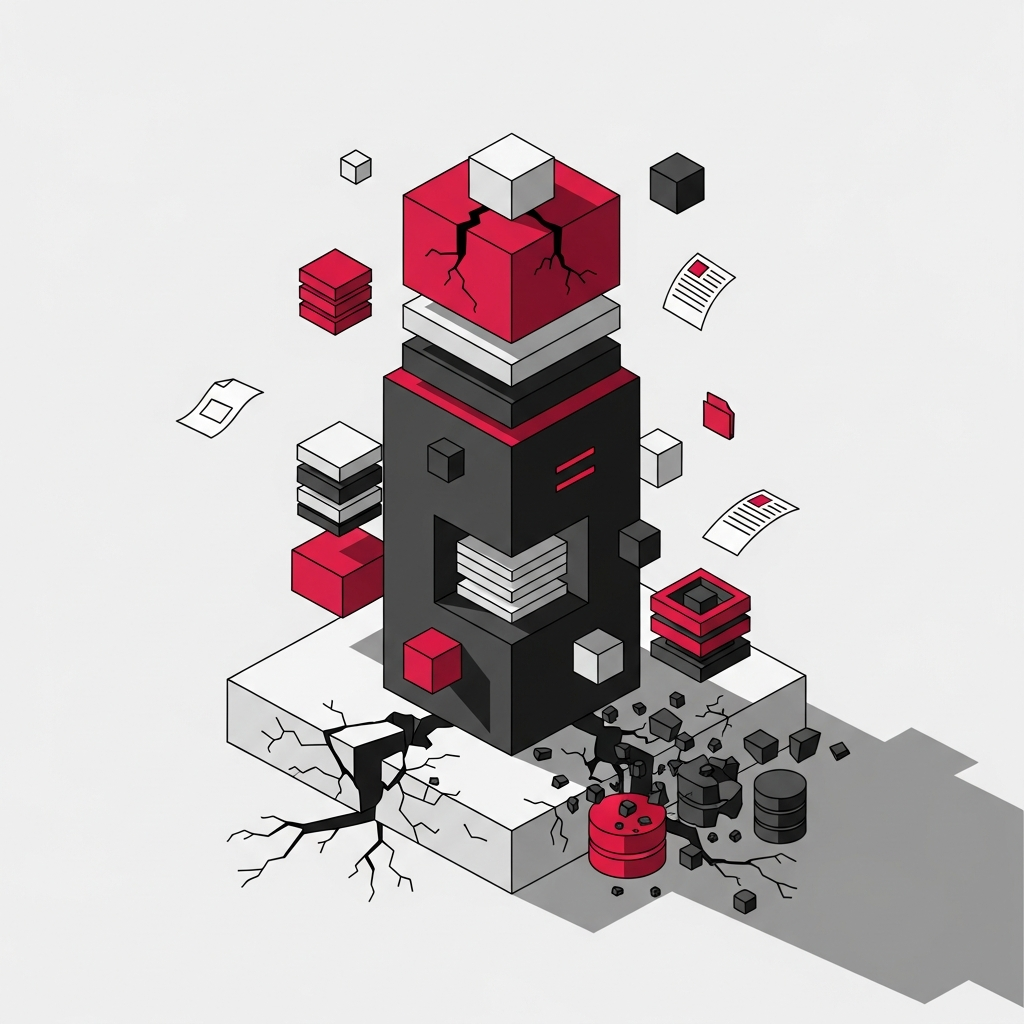How Do I See ROI From Enterprise AI?

The world of enterprise AI is in a frustrating period of growing pains. Successful pilots and impressive proofs-of-concept (PoCs) are everywhere, showcasing the incredible potential of this technology in controlled environments. But a troubling pattern has emerged. While the demos look great, the journey from a promising pilot to a scalable, value-generating production system is proving far more difficult than anyone anticipated.
This is the “Last-Mile Problem” of AI. Like in logistics, where moving a package the first 90% of the way is easy and the final 10% to the customer's doorstep is brutally complex, getting an AI pilot working is just the beginning. The real challenge, the last mile, is integrating it into the messy reality of your existing business processes, data systems, and workflows.
The data confirms this isn't just a feeling; it's a systemic issue. Research from S&P Global reveals that 42% of companies now abandon the majority of their AI initiatives before they reach production.
It shouldn’t be that way.
Those enterprises that pull the emergency chute on AI now are setting themselves back potentially decades compared to their competition.
So why are so many intelligent leaders with skilled teams getting stuck in this last mile? The answer comes down to two fundamental missteps made at the very beginning of the journey:
- They fail to anchor the project to specific, high-value business outcomes
- They try to build on a flawed technical premise, taking shortcuts on the foundational work.
Too many teams treat AI like a lottery ticket, hoping for a magical win. The reality is that a successful AI implementation is a strategic construction project. It requires a clear blueprint, a solid foundation, and a disciplined plan for execution. Without that, you're not building a business asset; you're building an expensive science fair project.
Why Your AI Project Is Set Up to Fail
Most failed AI projects aren't undone by a single catastrophic event, but by a combination of systemic issues that were baked in from the start. Think of it like trying to build a skyscraper in a swamp. You can get a beautiful one-story model home built. That’s your PoC. But the moment you try to add the second floor, the whole structure starts to sink.
This flawed approach typically rests on three weak pillars:
- Strategic Misalignment: The project is a "solution in search of a problem." It's technologically interesting but untethered from a clear business outcome, lacking stakeholder buy-in and a measurable path to value.
- Flawed Data Foundations: The adage "garbage in, garbage out" has never been more relevant. Ensuring there are mechanisms in place to handle structured and, perhaps more importantly, unstructured data proves to be one of the largest determinants of success.
- Lack of Organizational Readiness: Technology alone is never enough. For five consecutive years, executives have reported that cultural challenges, not technological ones, are the primary impediment to success. Without proper governance, AI literacy, and internal champions, even the best technology will fail from lack of adoption.
Trying to build a generative AI application without addressing these pillars is a recipe for disaster. It’s time for a different approach… a better one.
A Proven Path to AI Success
At MorelandConnect, our philosophy is the direct antidote to implementation debt. It’s a disciplined, engineering-first approach encapsulated in a single thesis: We don't build chatbots. We build AI foundations.
The initial chat interface or user-facing app isn't the final product; it's merely the first, tangible proof point of a much more valuable underlying asset. That asset is a robust, scalable, and secure foundation that can support not just one application, but all future AI-driven workflows your organization will ever need.
To guide our clients through the "last mile" and deliver real ROI, we’ve developed a systematic, seven-phase methodology. This framework is a blueprint designed to de-risk your investment at every step, ensuring your AI initiatives are built for production from day one.
Phase 1: Start with Business Value, Not Technology
The first, and arguably most important, step to generating ROI is to ignore the technology entirely and answer one question: "What valuable business problem are we trying to solve?" We explicitly avoid the "AI for AI's sake" trap by tying every initiative to a clear, measurable outcome.
- How it works: We facilitate intensive pain-point discovery sessions with your key stakeholders. Together, we use an Impact vs. Effort mapping exercise to identify and prioritize the opportunities with the highest potential ROI. This process results in the selection of 1-3 high-value "lighthouse projects" to serve as the initial focus.
- Why it works: This phase directly solves for Strategic Misalignment. It ensures your project has executive buy-in and clear success metrics before a single line of code is written, preventing you from wasting resources on scattered, low-impact initiatives.
Phase 2: Build Your Human Foundation
With business value as our North Star, the next step is to prepare the organization for change. Technology doesn't exist in a vacuum; it requires a receptive and prepared culture to thrive.
- How it works: We help you form a cross-functional "AI Council" with representatives from major business units and a dedicated executive sponsor. This group establishes a governance framework and champions AI literacy training for key stakeholders.
- Why it works: This directly addresses the Lack of Organizational Readiness. By establishing internal champions and building a common vocabulary, you proactively mitigate the cultural resistance that derails so many technical projects.
Phase 3: Confront Your Data Reality
This is the most critical technical phase—where we tackle the primary reason AI projects fail: poor data.
- How it works: We conduct a comprehensive data inventory, mapping all the sources required for your lighthouse projects. This isn't just about databases and APIs; it's about everything—Excel files, PDFs, ERP systems, and even the "tribal knowledge" that exists only in the minds of your most experienced employees. From there, we develop a concrete strategy to ensure all this data is clean, accessible, and reliable.
- Why it works: This is where we pay down your Implementation Debt upfront. By confronting the messy reality of your data ecosystem early, we prevent the "garbage in, garbage out" problem that renders even the most advanced algorithms useless.
Phase 4: Engineer the “Business Operating System”
With the strategic, human, and data foundations in place, we begin the technical buildout. But we’re not just building an app; we’re constructing the central, extensible "AI Operating System" for your entire business.
- How it works: A computer's OS manages core resources and provides standard services to all applications. Similarly, your AI Foundation manages your most valuable resource. Data. And provides standardized tools (e.g., "look up customer order," "generate a quote") that can be used by any future application.
- Why it works: This foundation-based architecture prevents you from building brittle, single-purpose point solutions that can't scale. You build the core data and tool layer once, then extend it everywhere.
Phase 5: Validate with a Human in the Loop
The first application we deploy on the Foundation is always a conversational chat interface. But this isn't your average chatbot. It’s a powerful validation environment.
- How it works: Your own Subject Matter Experts (SMEs) use the chat interface to manually test the priority use cases. They issue commands in plain English, "Pull the quality report for batch 789 and check it against the specs from Acme Corp." and validate that the underlying tools and data pipelines are functioning perfectly.
- Why it works: This is the ultimate risk mitigation strategy. Before any process is automated, it's first tested and hardened through manual interaction by the people who know your business best. This builds trust and ensures the logic is sound before you "take the training wheels off."
Phase 6: From Conversation to Catalyst: The Leap to Automation
Once a workflow has been proven effective in the chat interface, we move from reactive queries to proactive automation. This is where the transformative value of the Foundation is truly unlocked.
- How it works: We identify the "Catalysts" in your business—the events that should trigger an intelligent workflow. These can be anything: an incoming email, a file upload, a data threshold being breached, or a scheduled time. The logic validated in Phase 5 is now configured to run automatically when its catalyst event occurs.
- Why it works: This is how the conversation becomes the workflow. A multi-step process that an expert tested manually in chat now runs 24/7 in the background, handling repetitive work and freeing your team to focus on higher-value tasks.
Phase 7: Ensure Success with Hypercare
Deployment is not the end of the journey. To ensure deep adoption and lasting success, we embed our team with yours during the critical post-launch period.
- How it works: Our Forward-Deployed Engineers (FDEs) provide intensive, "white-glove" support during the initial rollout. This isn't a help desk ticket; it's hands-on, real-time issue resolution and user feedback collection.
- Why it works: This "Hypercare" process avoids the common "handoff-and-hope" failure mode. We solve for
Poor User Adoption by building trust and ensuring the solution is not just deployed, but truly embedded into the fabric of your daily operations.
The Compounding ROI of a True Foundation
This disciplined methodology does more than just increase your odds of success; it fundamentally changes the financial equation of AI. A traditional ROI analysis looks at a single project in isolation. The FOUNDATION model, however, is designed to generate compounding returns.
The heavy lift, your primary investment, is in building the initial Foundation. That's where the hard engineering work of data mapping, tool integration, and governance happens. But once that asset is in place, each subsequent automated workflow, each new "Catalyst," can be deployed for a fraction of the initial time and cost.
The ROI of your second, third, and fourth AI applications will be substantially higher than the first because you're building on top of an existing, paid-for asset, not starting from scratch.
This reframes the entire decision. You’re not just funding a tactical, one-off project. You are making a strategic, capital investment in a core business asset that will accelerate all future innovation and automation across your entire organization.
Are You Building a Demo or a Lasting Asset?
The AI "Last-Mile Problem" is real, and the statistics show that most companies get stuck there. They're chasing the ephemeral glow of a standalone demo while ignoring the foundational work required for real-world success.
The question for you as a leader isn't whether you should adopt AI. It's whether you're willing to approach it with the discipline required to make it succeed. Are you ready to stop building impressive demos and start building a permanent, value-generating asset for your business?
If you are, that's where we begin




